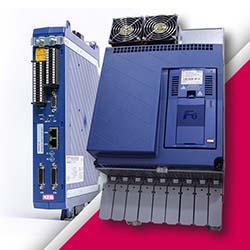Modern solar heat systems incorporate new technology, like smart sensors and other items to improve efficiency. They have found a home in a wide range of industrial facilities — and could help the manufacturing industry reduce emissions created by heating.
 Developing Solar Heat for Use in Manufacturing Facilities
Developing Solar Heat for Use in Manufacturing Facilities

Emily Folk | Conservation Folks
Constant and predictable heat is essential for manufacturing processes. Drying materials, heating products and keeping a building at a comfortable temperature for workers all require a great deal of energy.
The recent push toward green and lean manufacturing has leading businesses in the industry looking for ways to reduce energy consumption and factory emissions. As a result, there’s been growing interest in solar heat systems that use captured thermal energy to provide heat transfer for factories and other commercial buildings.
Modern solar heat systems incorporate new technology, like smart sensors and other items to improve efficiency. They have found a home in a wide range of industrial facilities — and could help the manufacturing industry reduce emissions created by heating.
Industrial Heat and the Challenges of Factory Decarbonization
Process heat is a major consumption of electricity across modern industry. Without access to reliable, sustainable energy sources, business owners have few low-emissions options for providing that heat.
Heavy industry and factories could be one of the hardest sectors of the economy to decarbonize without alternatives.
Solar heating devices use various configurations and designs to capture energy from the sun that can be used for drying, warming or cooling and providing process heat.
For example, a solar heating system may collect thermal energy to heat water or regulate an indoor facility’s temperature.
Solar can provide a more sustainable option for various heating needs. Over time, the right system could help factory owners cut back on the power needed to provide heat for manufacturing.
Common Applications of Solar Heat in Manufacturing
Direct solar dryers are used at scale in the agricultural industry, where captured heat helps to dry and preserve food items. They offer a few advantages over other drying systems, and can protect food from rain and the elements. The speed of drying they provide can also reduce the chance of items spoiling during the process.
Typically, however, there are some limitations to these systems. Often, they’re less effective than modern dryers and may require a backup heating system.
Solar air heating and cooling systems can provide a more eco-friendly environmental control for commercial and industrial buildings. They work best in regions where winters are long, cold and sunny, and can offer effective heating that does not rely on fossil fuels.
Solar thermal power can also be useful for heating materials in manufacturing. Modern engines used in solar energy capture and conversion often operate at temperatures in excess of 800 degrees celsius. Similar systems can directly provide thermal energy for industrial facilities.
For example, parabolic dish and trough collectors — which use parabolic mirrors to capture thermal heat — are one option.
Typically, these mirrors are fixed, limiting their ability to collect thermal energy throughout the day as the sun moves. More advanced applications of these collectors use new smart technology to manage this problem. For example, American solar startup Skyven Technologies develops Intelligent Mirror Arrays (IMAs) that move throughout the day, tracking the sun’s motion for maximum thermal energy collection.
One application of the tech, an installation at a robotic dairy farm in Valley Falls, New York, uses the system to heat water to sanitize the farm’s self-cleaning milking robots. The array there is efficient enough to produce 50,000 gallons of hot water every year, replacing water heating systems that relied on wood and propane for fuel.
Factories and other facilities that need hot water or sustainable environmental control systems may find these modern thermal heating tech applications to be the most useful.
How the Manufacturing Industry Can Take Advantage of Solar Heat Systems
Manufacturers wanting to reduce their carbon footprint can try new solar heat systems as a valuable, eco-friendly option. New technology, like IMAs, makes traditional thermal energy collection systems more effective than ever. While they may not be a replacement for all heating systems, they can offer an alternative to heating solutions reliant on wood or fossil fuels.
The content & opinions in this article are the author’s and do not necessarily represent the views of ManufacturingTomorrow
Comments (0)
This post does not have any comments. Be the first to leave a comment below.
Featured Product

